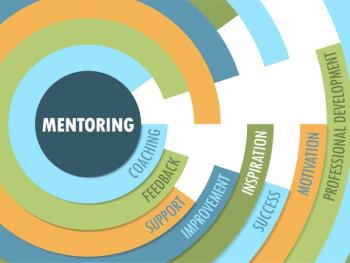The supervisor’s role should include an exploration of the trainee’s vulnerabilities and the impact of experienced structural racism, whether personally experienced or as witnessed in the patients and families they encounter, without crossing the boundary to provide therapy.
The effects of structural racism are seen when diverse families are more likely to experience unemployment or poverty, and have difficulty navigating insurance or accessing reputable medical facilities and treatment. In addition, these children are more likely to live in unsafe neighborhoods and are unable to access fresh produce or play outdoors because they feel unsafe. Lack of fair housing opportunities and clean and safe neighborhoods are additional factors in effectively removing the marginalized from having a mainstream experience. Trainees may witness the lack of quality educational opportunities in communities of color including access to needed electronic equipment (iPad/school-issued laptops) to access virtual learning during the pandemic. Besides, the lack of technology and spotty services (Wi-Fi, data, and internet services) limits their ability to participate in telehealth treatment. Lack of educational opportunities and individualized educational services for those in need further contribute to the downward spiral of ever-decreasing opportunities. In addition, trainees observe the increasing rates of unemployment, food insecurity as well as high rates of COVID-19 infections in communities of color.
Such experiences highlight the importance of considering systems of care issues such as culture and environment, as trainees observe disproportionate reporting of abuse and involvement with the welfare and justice systems in minority groups compared to others. Observing the disparities in all aspects of their patient’s lives, the impact of long-standing oppression and racism becomes increasingly relevant to the psychiatry trainee's experience. Furthermore, such effects of discrimination may resonate with trainees who may have experienced similar deprivations in their own lives. They then begin to question their role and that of their training institutions in addressing such disparities as well as the efforts of national organizations such as the American Academy of Child and Adolescent Psychiatry, the American Psychiatric Association, and the American Medical Association in addressing disparities. While trainees feel at liberty to discuss other transference and countertransference issues with their supervisors, there is a hesitation in discussing issues related to racism and bias. In addition, supervisors, too, may lack guidance and experience similar discomfort discussing such issues with trainees during supervision.
The Role of Supervisors
In reviewing the extant literature, Hook and colleagues12 and Schen and colleagues13 make clear there are certain attributes necessary to provide good supervision specifically in addressing racial and cultural issues. These include adopting a stance of cultural humility, sharing of relevant experiences, accepting differences, and creating an atmosphere of openness that makes difficult dialogues, such as those related to racism and subsequent intergenerational trauma, possible. The literature is sparse in providing guidance to address the issues of racism including those experienced in a dyadic situation, such as microaggressions experienced in clinical situations with patients or by colleagues and other team members. It is almost nonexistent in providing guidance to address the concerns related to structural racism.
Racism is experienced at various levels: internalized, interpersonal as well as institutional/structural. Just as supervision allows opportunities for trainees to discuss transference and countertransference experienced in clinical encounters, there is a role for supervision in navigating the emotions that arise as trainees navigate a racist world. Instructors should provide a venue to explore the perceived inadequacy as internalized by the trainee due to experiences with structural bias, and lack of personal opportunities as well as interpersonal experiences of microaggressions and invalidation in education and training.
The supervisor’s role should include an exploration of the trainee’s vulnerabilities and the impact of experienced structural racism, whether personally experienced or as witnessed in the patients and families they encounter, without crossing the boundary to provide therapy. Leaders and mentors need to validate these experiences, create a safe space for dialogue, and then provide guidance and advocate for action, supporting the trainee to confront microaggressions when they occur. Supporting trainees to become advocates for themselves, their peers, and their patients will be a priority in creating individual responses to structural racism.
While supervision of minority trainees can be crucial in developing individual understanding of racism and structural racism, a more seismic change will occur when the educator is able to inculcate such advocacy towards the elimination of biases with entire groups of trainees, not just those in the minority. Leaders can support the creation of a “cafe style” roundtable discussion where issues related to racism or bias are discussed. These conversations between and among trainees from different backgrounds, with different statuses of privilege themselves, can introduce personal or witnessed experiences to the greater collective. Ideally there can be non-confrontational dialogue focused on understanding each other’s experiences that can promote individual insight and growth.
As trainees further contemplate these issues, they will reconsider clinical encounters with diverse patients, enabling them to better empathize and care for patients and families. On a larger level, these dialogues can lead to changes in the institutional structure and response to racism. It is hoped that such education will combat microaggressions and increase bystander response through allyship to set the stage for a more robust response from all trainees.
In addition to providing guidance to the trainees, supervision will be a more meaningful experience when supervisors also examine their own biases that arise during the course of supervision and address them. This will be an enriching experience and enhance the supervisor’s ability to provide the necessary supervision. Such self-examination alongside peer supervision of the supervisors may guide the ability of the supervisee, supervisor, and ultimately the institution to make changes. They can also discuss historical traumas, the ongoing disparities in provisions of care, and the role of advocacy, as supporting patients and families who experience structural racism enhances health and minimizes disparities. In the case of child psychiatry, supervisors can help trainees think of how to make health care more equitable and available to all, and educate trainees on the impact of structural racism on the interaction and overlays of structural racism on the systems of care encountered by patients and families, including the -juvenile justice system, public assistanceand child protective services.
These actions can include discussions on neighborhoods in which clinics are located, availability of other resources such as transportation, food access, safe housing, and how institutions can partner with other systems and agencies to promote health care and more specifically mental health care access. With these dialogues and institutional involvements, there will be an onus on academic and health care institutions to do their part in battling structural racism and investing in communities. The role of the supervisor is to not only help with clinical information but also consider the ethical principles behind health care delivery and advocate on multiple levels. Involvement in advocacy efforts is critical to reverse the historic exclusion from decision-making, which played a part in the existing structural racism.Such discussions will address cultural and environmental contexts of our patients and inculcate cultural humility in both the supervisor and supervisee. (See Table)
Concluding Thoughts
Trainees navigate their personal and professional growth in a challenging world, and supervision is critical in dismantling and addressing structural racism. It enhances not only the educational experience by guiding the supervisee on the subtleties of managing patients, but also serves as a lightning rod for change to address often ignored issues related to racism. Supportive advocacy through education and supervision will pave the way for the individual supervisee to feel empowered to act as an advocate for themselves, and address interactional issues as they come up between provider and patients and families as well as among peers to dismantle the longstanding institutional “blind eye” which is structural racism.
Dr Adam is clinical professor of psychiatry, University of Missouri-Columbia, Columbia, MO. Dr Tumuluruis associate professor of psychiatry at the University of Pittsburgh and the medical director of the Southside Acute Partial and IOP Program part of Western Behavioral Health/UPMC, in Pittsburgh, PA. Dr Arshad is attending psychiatrist and assistant program director for the Post Pediatric Portal Program at the Children’s Hospital of Philadelphia. The authors report no conflicts of interest concerning the subject matter of this article.
References
1. Osseo-Asare A, Balasuriya L, Huot SJ, et al. Minority Resident Physicians’ Views on the Role of Race/Ethnicity in Their Training Experiences in the Workplace. JAMA Netw Open. 2018;1(5):e182723.
2. Association of American Medical Colleges. Diversity in Medicine: Facts and Figures 2019. Figure 18. Percentage of all active physicians by race/ethnicity, 2018. Accessed December 11, 2020. https://www.aamc.org/data-reports/workforce/interactive-data/figure-18-percentage-all-active-physicians-race/ethnicity-2018
3. Shapiro A. What It is Like to Be a Young Black Doctor. NPR. June 25, 2020.
4. Toretsky C, Mutha S, Coffman J. Breaking Barriers for Underrepresented Minorities in Health Professions. Healthforce Center at UCSF. July 2018. Accessed December 11, 2020. https://healthforce.ucsf.edu/sites/healthforce.ucsf.edu/files/publication-pdf/Breaking%20Barriers%20for%20Underrepresented%20Minorities%20in%20the%20Health%20Professions%20.pdf
5. Moffic HS, Bailey RK, Clark FA, et al. Dismantle Racism in Psychiatry & Society. Psychiatric Times. August 11, 2020. Accessed December 11, 2020. https://www.psychiatrictimes.com/view/dismantle-racism-in-psychiatry-society
6. Balon, R. Supervision: A Crucial Element of Psychiatric Education. Acad Psychiatry. 2019;43:440-441.https://doi.org/10.1007/s40596-019-01075-1
7. AACAP. Training Toolkit for Systems-Based Practice. October 2009. Accessed December 11, 2020. https://www.aacap.org/AACAP/Resources_for_Primary_Care/Training_Toolkit_for_Systems_Based_Practice.aspx
8. Williams DR, Mohammed SA. (2013). Racism and health I: Pathways and scientific evidence. Am Behav Sci. 2013;57(8):1152-1173.
9. Nixon SA. The coin model of privilege and critical allyship: implications for health. BMC Public Health. 2019;19(1):1637.https://doi.org/10.1186/s12889-019-7884-9.
10. Bailey ZD, Krieger N, Agénor M, et al. Structural racism and health inequities in the USA: evidence and interventions. Lancet. 2017;389(10077):1453-1463.
11. Structural Racism. Racial Equality Tools. Accessed December 11, 2020. https://www.racialequitytools.org/fundamentals/core-concepts/structural-racism
12. Hook JN, Watkins CE Jr, Davis DE, et al. Cultural Humility in Psychotherapy Supervision. Am J Psychother. 2016;70(2):149-166.
13. Schen CR, Greenlee A. Race in Supervision: Let's Talk About It. Psychodyn Psychiatry. 2018;46(1):1-21.
















